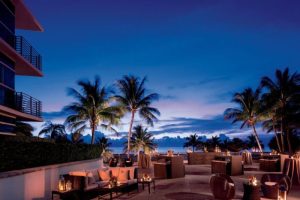
Embark on a journey filled with breathtaking landscapes and stunning photography as we delve into the world of mountain trekking and photography. From tips on capturing the perfect shot to the importance of proper gear, get ready to explore the perfect blend of adventure and artistry.
Mountain Trekking and Photography

Combining mountain trekking with photography offers a unique opportunity to capture stunning landscapes and create lasting memories of your outdoor adventures. The appeal lies in the chance to document the beauty of nature while challenging yourself physically and mentally.
Tips for Capturing the Best Mountain Landscapes
- Plan your shots: Scout locations in advance and consider the best times for lighting.
- Use a tripod: Stable shots are crucial for capturing the details of mountain scenery.
- Experiment with angles: Try different perspectives to find the most captivating views.
- Focus on details: Highlight textures, colors, and patterns unique to the mountains.
- Embrace the weather: Dramatic clouds, fog, or snow can add depth to your photos.
Importance of Proper Gear for Trekking and Photography
- Quality hiking boots: Ensure comfort and support during long treks over varied terrain.
- Camera equipment: Invest in a durable camera and lenses suitable for outdoor conditions.
- Clothing layers: Stay prepared for changing weather with moisture-wicking and insulating layers.
- Backpack organization: Carry essentials like water, snacks, and extra batteries efficiently.
- Navigational tools: Have maps, compass, or GPS to navigate trails and find the best photo spots.
Challenges of Balancing Trekking and Photography
- Time management: Finding the right balance between trekking progress and photo opportunities can be challenging.
- Physical strain: Carrying camera gear adds weight and can impact your energy levels during hikes.
- Weather conditions: Be prepared for sudden changes that may affect both trekking and photography plans.
- Safety concerns: Stay alert to potential hazards while focusing on capturing images in remote mountain areas.
- Pack weight: Striking a balance between necessary trekking gear and photography equipment can be tricky.
Family Travel

Family travel can be a wonderful opportunity to bond with loved ones and create lasting memories. Mountain trekking, in particular, can offer a unique experience for families seeking adventure in the great outdoors. The combination of physical activity, breathtaking scenery, and the chance to disconnect from technology can be incredibly rewarding for both parents and children.
Suitability of Mountain Trekking for Families
Mountain trekking is a versatile activity that can be adapted to suit families with varying levels of experience and fitness. It provides an opportunity for families to work together as a team, overcoming challenges and enjoying the beauty of nature. With proper planning and guidance, children can safely participate in mountain treks, gaining confidence and appreciation for the environment.
Family-Friendly Destinations for Mountain Trekking and Photography
Rocky Mountain National Park, Colorado
Offers a range of hiking trails suitable for families with stunning views of the Rocky Mountains.
Lake District, England
Scenic landscapes and accessible trails make it an ideal destination for family trekking and photography.
Banff National Park, Canada
Known for its diverse wildlife and picturesque mountain views, perfect for family adventures.
Benefits of Involving Children in Outdoor Adventures
- Encourages physical activity and promotes a healthy lifestyle.
- Fosters a sense of teamwork and cooperation within the family.
- Provides opportunities for learning about nature and wildlife conservation.
- Promotes mental well-being and reduces stress through connection with nature.
Tips for Ensuring Safety and Enjoyment During Family Mountain Trips
- Plan ahead and choose trails suitable for the skill level of all family members.
- Ensure everyone is equipped with appropriate gear, including sturdy footwear, layers of clothing, and plenty of water and snacks.
- Teach children about Leave No Trace principles to minimize environmental impact.
- Stay together as a group and establish clear communication guidelines while on the trail.
- Be mindful of weather conditions and know when to turn back if necessary for safety.
Romantic Getaways
Planning a romantic mountain getaway can be a wonderful way for couples to connect and create lasting memories together. The combination of mountain trekking and photography offers a unique opportunity to bond over shared experiences and explore the beauty of nature hand in hand.
Secluded Mountain Destinations
When it comes to romantic getaways, choosing a secluded mountain destination can add an extra touch of intimacy and privacy. Here are some recommendations for secluded mountain destinations ideal for couples:
- Aspen, Colorado: Known for its stunning mountain views and luxurious resorts, Aspen offers a romantic setting for couples looking to escape the hustle and bustle of city life.
- Lake Louise, Canada: Surrounded by the majestic Rocky Mountains, Lake Louise is a picture-perfect destination for couples seeking a peaceful and romantic retreat.
- Santorini, Greece: While not a traditional mountain destination, the breathtaking cliffs of Santorini offer a unique backdrop for a romantic getaway filled with stunning sunsets and picturesque views.
Wellness Retreats
Mountain trekking and photography can significantly contribute to overall wellness by providing a holistic experience that nurtures both the body and mind. The combination of physical activity, connection with nature, and creative expression offers a unique opportunity for rejuvenation and self-discovery.
Mental Health Benefits of Outdoor Activities and Artistic Expression
Engaging in mountain trekking and photography can have profound mental health benefits. The physical exertion involved in trekking releases endorphins, which are known to boost mood and reduce stress. Additionally, spending time in nature has been linked to improved cognitive function and reduced symptoms of anxiety and depression. On the other hand, photography allows individuals to express themselves creatively, fostering a sense of accomplishment and self-expression.
Incorporating Mindfulness Practices
To enhance the wellness aspects of mountain trekking and photography, one can incorporate mindfulness practices into their sessions. This can involve taking moments to appreciate the beauty of the surroundings, practicing deep breathing techniques, or simply being fully present in the moment. Mindfulness can help individuals deepen their connection with nature and their creative process, leading to a more fulfilling experience.
Nature, Creativity, and Well-being
The connection between nature, creativity, and well-being is profound. Nature has a calming effect on the mind, reducing stress and promoting relaxation. Engaging in creative activities like photography stimulates the brain and allows for self-expression. By combining these elements in mountain trekking and photography, individuals can experience a sense of balance, inspiration, and overall well-being.
Beach Vacations
When comparing mountain trekking vacations with beach vacations, one can see a clear distinction in the landscapes and activities offered. While mountain trekking provides a rugged and adventurous experience, beach vacations offer relaxation and leisure by the sea.
Unique Photography Opportunities: Mountains vs Beaches
Mountains present photographers with majestic peaks, dramatic cliffs, and stunning panoramic views that can create breathtaking images. On the other hand, beaches offer picturesque sunsets, crystal-clear waters, and colorful marine life that can result in captivating photographs.
Tips for Transitioning from Beach to Mountain Photography
- Adjust your camera settings to capture the different lighting conditions in mountain landscapes, which may vary from the bright sunlight of the beach.
- Focus on capturing the unique textures and formations of mountains, such as rocky outcrops and lush forests, compared to the smooth sands and gentle waves of the beach.
- Experiment with different angles and perspectives to highlight the grandeur of mountains or the serenity of the beach.
Experiences and Activities: Beaches vs Mountains
Beach destinations offer activities like swimming, sunbathing, water sports, and beachcombing, providing a more laid-back and leisurely experience. On the other hand, mountain destinations offer hiking, rock climbing, wildlife spotting, and camping, catering to adventure enthusiasts.
Safari Adventures
Safari adventures offer a unique opportunity to witness wildlife in their natural habitat, providing incredible photography opportunities that differ from those found in mountain trekking expeditions.
Wildlife Photography in Mountain Trekking vs. Safari Adventures
When it comes to wildlife photography, mountain trekking and safari adventures each present their own set of challenges and rewards. In mountainous terrain, wildlife encounters can be more sporadic and unpredictable compared to the controlled environments of safari parks. However, capturing animals in their natural mountain habitat can result in stunning and ethereal images that showcase the resilience of wildlife in challenging conditions.
Challenges of Capturing Wildlife in Mountainous Terrain
- Erratic weather conditions can make it challenging to predict animal behavior and movements.
- Animals in mountainous regions are often more elusive and difficult to spot due to the rugged terrain and dense vegetation.
- The high altitude and steep slopes can make it physically demanding to navigate and set up equipment for the perfect shot.
Tips for Photographing Wildlife During Mountain Expeditions
- Be patient and observant, as wildlife sightings in mountainous areas may require more time and effort.
- Use a telephoto lens to capture animals from a safe distance without disturbing their natural behavior.
- Pack lightweight and versatile gear to easily maneuver through challenging terrain.
- Consider the lighting conditions at different times of the day to capture the best shots of wildlife in mountain landscapes.
Unique Experiences in Safari vs. Mountain Destinations
- In safari adventures, you have the opportunity to witness large herds of animals up close in their natural environment.
- Mountain destinations offer a sense of solitude and tranquility, with the chance to capture rare species adapted to harsh conditions.
- Safari experiences often include guided tours and expert trackers to enhance wildlife sightings, while mountain trekking allows for a more independent and adventurous approach to wildlife photography.
Urban Exploration
Urban exploration photography and mountain trekking photography have distinct styles that cater to the unique characteristics of each environment. While mountain trekking photography focuses on capturing the vast natural landscapes, rugged terrains, and serene beauty of the mountains, urban exploration photography delves into the dynamic and bustling cityscapes, architectural details, street art, and human interactions within urban settings.
Differences in Photography Styles
Urban exploration photography often involves capturing the juxtaposition of old and new buildings, unique perspectives of city structures, street scenes, and the vibrant energy of urban life. On the other hand, mountain trekking photography emphasizes the grandeur of mountain peaks, pristine lakes, lush forests, and the play of light and shadows on natural elements.
Tips for Capturing Urban and Natural Landscapes
- For urban landscapes, focus on capturing the architectural details, street art, reflections in glass buildings, and the daily life of city dwellers.
- When photographing natural landscapes, pay attention to the changing light conditions, the symmetry of mountain ranges, the flow of rivers, and the wildlife within the mountains.
- Experiment with different angles, perspectives, and compositions to add visual interest to your photos.
- Use leading lines, framing techniques, and foreground elements to create depth and dimension in your urban and natural landscape photos.
Adapting Skills from Urban to Mountain Photography
- Urban photographers can adapt their skills by focusing on capturing the unique textures, shapes, and patterns found in the mountains.
- Incorporate elements of urban composition techniques, such as rule of thirds, symmetry, and negative space, into your mountain photography.
- Pay attention to the play of light and shadows on mountain landscapes, similar to how you would capture the interplay of light in urban environments.
Finding Beauty in Cityscapes and Mountain Vistas
- Look for unique perspectives, hidden gems, and interesting details in both cityscapes and mountain vistas.
- Embrace the contrast between the man-made structures of the city and the raw, untouched beauty of the mountains.
- Capture the essence of urban decay, nature reclaiming man-made structures, and the harmonious coexistence of human creations and natural landscapes.
Road Trips
Road trips offer a unique opportunity to explore the great outdoors and capture stunning moments through mountain trekking and photography. The combination of these activities creates a memorable experience filled with adventure and breathtaking landscapes.
Advantages of Incorporating Mountain Trekking Stops into Road Trip Itineraries
- Experience the beauty of nature up close and personal
- Opportunity to disconnect from technology and reconnect with the environment
- Physical activity and fresh air provide a sense of rejuvenation and well-being
- Discover hidden gems and off-the-beaten-path locations
Tips for Capturing Memorable Moments During Mountain Trekking Road Trips
- Wake up early to catch the golden hour lighting for stunning photos
- Experiment with different angles and perspectives to capture unique shots
- Pack light and bring essential photography gear for easy mobility
- Take breaks to soak in the scenery and appreciate the moment before capturing it
Freedom and Spontaneity for Photographers on Road Trips
- Flexibility to stop and explore whenever a photogenic spot catches your eye
- No strict schedules or time constraints, allowing for creative freedom in photography
- Ability to chase the best lighting conditions for optimal photos
- Opportunity to capture authentic moments and candid shots along the journey
Recommendations for Planning a Road Trip Focused on Mountain Trekking and Photography
- Research and map out scenic routes and mountain trails in advance
- Pack essentials such as water, snacks, comfortable hiking gear, and camera equipment
- Check weather conditions and be prepared for unexpected changes in the forecast
- Stay flexible and open to spontaneous detours for unique photo opportunities
Cruise Travel
When comparing photography opportunities on a cruise versus a mountain trekking expedition, there are unique challenges and advantages to consider. While mountain trekking offers stunning natural landscapes and wildlife photography, cruise travel provides the opportunity to capture picturesque seascapes and coastal views.
Photography Challenges
- Capturing Landscapes: On a mountain trekking expedition, photographers have the advantage of stable ground and stationary landscapes, allowing for precise composition and focus. However, capturing landscapes from a moving cruise ship can be challenging due to the constant motion, requiring photographers to anticipate and adjust for movement.
- Lighting Conditions: Lighting conditions can vary significantly between mountain landscapes and seascapes on a cruise. While mountain views may offer dramatic lighting at sunrise and sunset, seascapes during a cruise can provide unique reflections and colors on the water.
Photography Tips
- Stabilization: Use a tripod or image stabilization technology to minimize motion blur when photographing landscapes from a moving cruise ship.
- Composition: Experiment with different angles and perspectives to capture the essence of both seascapes and mountainscapes during cruise travel.
- Timing: Take advantage of golden hour lighting during sunrise and sunset to enhance the beauty of both seascapes and mountainscapes.
Unique Experiences
- Perspectives: Cruise travel offers a unique perspective of coastal landscapes and seascapes that may not be accessible by land, providing a different viewpoint for photographers.
- Variety: While mountain expeditions focus on a specific location, cruise vacations offer the opportunity to explore multiple destinations and capture diverse landscapes along the way.
Sports Tourism
Sports tourism offers a unique opportunity to combine physical activity, adventure, and the beauty of nature. When it comes to mountain trekking and photography, engaging in sports activities not only enhances the overall experience but also provides numerous physical and mental benefits.
Physical and Mental Benefits
- Improved cardiovascular health and endurance from hiking up steep mountain trails.
- Enhanced mental well-being and reduced stress levels by immersing in the tranquility of nature.
- Increased muscle strength and flexibility through navigating rugged terrain and carrying photography equipment.
- Boosted focus and mindfulness while capturing breathtaking landscapes and candid moments during the trek.
Capturing Action Shots
When it comes to capturing action shots in mountainous terrain, it’s essential to be prepared and agile. Utilize fast shutter speeds to freeze motion, focus on the athlete’s expressions and movements, and experiment with different angles to convey the intensity and energy of the sports activity.
Adrenaline Rush and Sense of Accomplishment
Sports photography during mountain expeditions can evoke a sense of adrenaline rush and accomplishment. The thrill of capturing a challenging climb or a victorious moment can be incredibly rewarding, motivating athletes and enthusiasts to push their limits and preserve memories of their achievements.
Tips for Documenting Mountain Trekking Adventures
- Invest in a sturdy camera backpack to carry your gear comfortably during the trek.
- Use a telephoto lens to capture distant subjects and a wide-angle lens for expansive landscapes.
- Experiment with different lighting conditions and compositions to create dynamic and visually appealing shots.
- Don’t forget to include human elements in your photos to add scale and storytelling to your mountain trekking adventures.
Concluding Remarks
As we wrap up our exploration of mountain trekking and photography, remember to keep your eyes open for the next picturesque adventure. Whether you’re a seasoned trekker or a budding photographer, let the beauty of nature inspire your next escapade.
FAQ Compilation
What gear is essential for mountain trekking and photography?
Proper hiking boots, a sturdy camera with a good zoom lens, and a reliable backpack for all your equipment.
How can I ensure safety during mountain trekking photo sessions?
Always check weather conditions, inform someone of your itinerary, and carry essentials like food, water, and a first aid kit.





